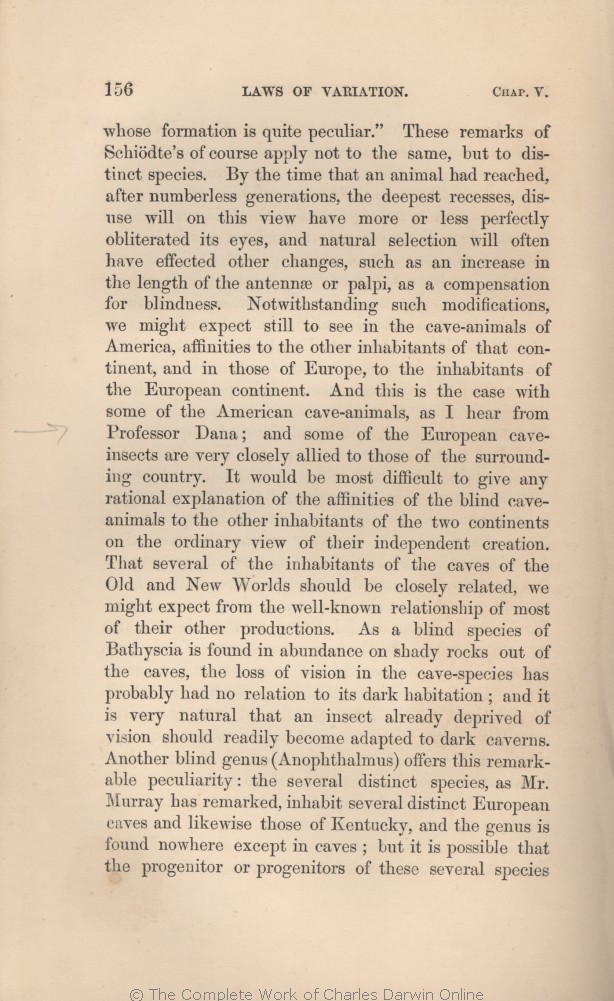These remarks of
Schiödte's | Schiödte's 1861 | | Schiödte's, 1866 1872 | | Schiödtes, 1869 |
| of course 1861 |
| it should be understood, 1866 1869 1872 |
| Europe, 1859 1860 1861 | | Europe 1866 1869 1872 |
| most 1859 1860 1861 1866 1869 | most 1872 |
| out of the 1861 |
| far from 1866 1869 1872 |
| has 1861 |
| of this one genus has 1866 1869 1872 |
| and 1861 1866 1869 | | for 1872 |
| very 1861 1866 1869 | very 1872 |
| peculiarity: 1861 1866 1869 | | peculiarity, 1872 |
| the several distinct 1861 1866 1869 |
| that the 1872 |
| has remarked, inhabit several distinct European caves and likewise those of Kentucky, and the genus is 1861 1866 1869 |
| observes, have not as yet been 1872 |
| nowhere 1861 1866 1869 | | anywhere 1872 |
| caves; 1861 1866 1869 | | caves, 1872 |
| but 1861 1866 1869 |
| yet those which inhabit the several caves of Europe and America are distinct; but 1872 |
| progenitor 1861 1866 1869 | | progenitors 1872 |
| or progenitors 1861 1866 1869 | or progenitors 1872 |
| species 1861 | | species, 1866 1869 1872 |
|









